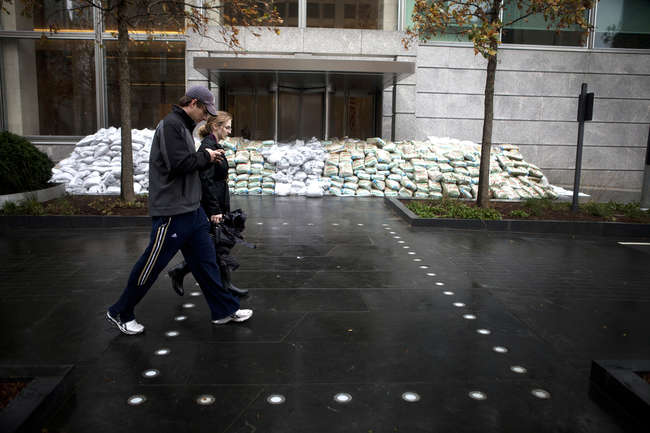
From tiny New Jersey Shore bungalows to Manhattan high-rises, properties were caught unprepared for the might of Superstorm Sandy. Now architects are grappling with the stark reality that many structures were not designed to withstand a changing climate. As the rebuilding process begins, so do complicated discussions about how to adapt existing buildings. The growing consensus is that they, too, must change with the climate.
“There is an overwhelming sense that we have to do something different. We were caught flat-footed, and we can’t have that happen again,” says Russell Unger, executive director of the Urban Green Council (UGC). Two weeks after the storm, New York City tapped UGC to lead a Building Resiliency Task Force. The first job is to compile a list of about 100 members from the building community, including property owners and managers, cost experts, engineers, and designers. Then findings and recommendations for adapting buildings will be released this summer.
In the meantime, the examples of success may serve as a template for how to rethink design in an era of unprecedented weather. Some properties directly in Sandy’s path fared well, like the Goldman Sachs building in Battery Park City, which braced for the storm with sandbags. “What we need to do now is forensic: Go back and look at what worked and what didn’t,” says Rafael Pelli, a Manhattan architect who designed the Solaire and the Visionare, two Battery Park City developments that remained dry largely because the neighborhood had been designed with higher street levels in anticipation of potential storm surges. The streets flooded, but buildings did not, for the most part.
There are clues in the failures as well. One New York Plaza, at the southernmost tip of Manhattan, has three subterranean floors that flooded almost completely. Although office tenants have returned, ground-floor retail requires a gut renovation. Brookfield Properties, which owns the building, points to city codes requiring fuel to be stored below grade as part of the problem: Without fuel for generators, pumping water out is difficult. “We need to think more about how we deal with flooding in such a highly dense and populated area with so much real estate,” says Brookfield spokesperson Matthew Cherry.
But buildings don’t exist in a vacuum, and the solutions individual properties choose to implement will also be determined by post-Sandy codes that municipalities enact, and the infrastructure investments that New York and New Jersey make—such as in seawalls, storm-surge barriers, engineered sand dunes, and improvements to the electrical grid. Florida, for example, enacted strict new building codes, addressing items such as windows and generators, after Hurricane Andrew devastated the region in 1992. “You can’t just put blinders on and think about what has to be done at the level of building without thinking about what can be done on a larger scale,” says Pelli.
Short-term solutions are also on the table, such as setting aside an emergency-supply room to store critical spare parts for equipment that might get damaged. Property owners could move electrical panels higher and modify them so emergency equipment could be added during a storm. Ductwork could be moved higher, and louvers could be repositioned above windowsills so they don’t act like hoses, funneling water into mechanical rooms, as happened during Sandy.
For many, Sandy’s biggest punch was the weeks-long power outage. Without power, sump pumps failed and high-rises were unable to deliver basic services like heat and domestic water. Engineering firms have been inundated with requests for generators. But a generator is no guaranteed lifeline if the fuel source is compromised. The answer may be installing a cogeneration system to reduce dependency on the grid, or rethinking how the grid is organized so a small collection of neighboring properties could share power in a microgrid.
Ideas that once seemed overwhelming and cost-prohibitive may actually take hold now that many properties have no choice but to overhaul their infrastructure as they begin to rebuild. “You get a clean piece of paper? Not often,” says Edward Brzezowski, a mechanical engineer with the Falcon Group. “Now we have the opportunity to stand back and say, ‘Maybe I can do something better.’ ”

Post a comment to this article
Report Abusive Comment